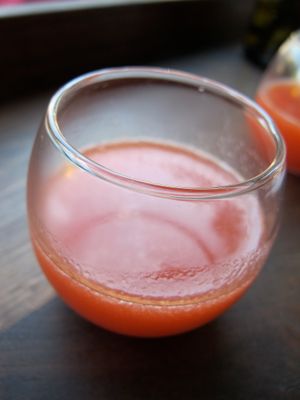This week's tablehopper: boo-yah!
A market shot at Frances.
How much did I love falling asleep last night to the sound of rain? Quite. And based on all the tweets I saw on the same subject, I know I am not alone. But I really can’t believe it’s already the end of October, the mind reels. Somebody slow this thing down, damn it! No brakes!
Many of you are gearing up for a full-tilt Halloween weekend (here are a few ideas for you), and of course World Series watching (pow pow!), but personally, I’m fired up to celebrate my birthday with friends over our big annual dinner together. I’ll be working a half day on Monday (the actual day) so I can have dinner with my family that evening, which provided a perfect excuse to ask my dad to make some pasta for dinner (heh). Oh yeah, and I’ll be picking up a cheesecake from Zanze’s, can’t wait.
So here’s a little afternoon reading for you, hope you enjoy it.
Happy Halloween and GO GIANTS!
the regular
Established Restaurant Reviews (it's about time we met...)
Frances
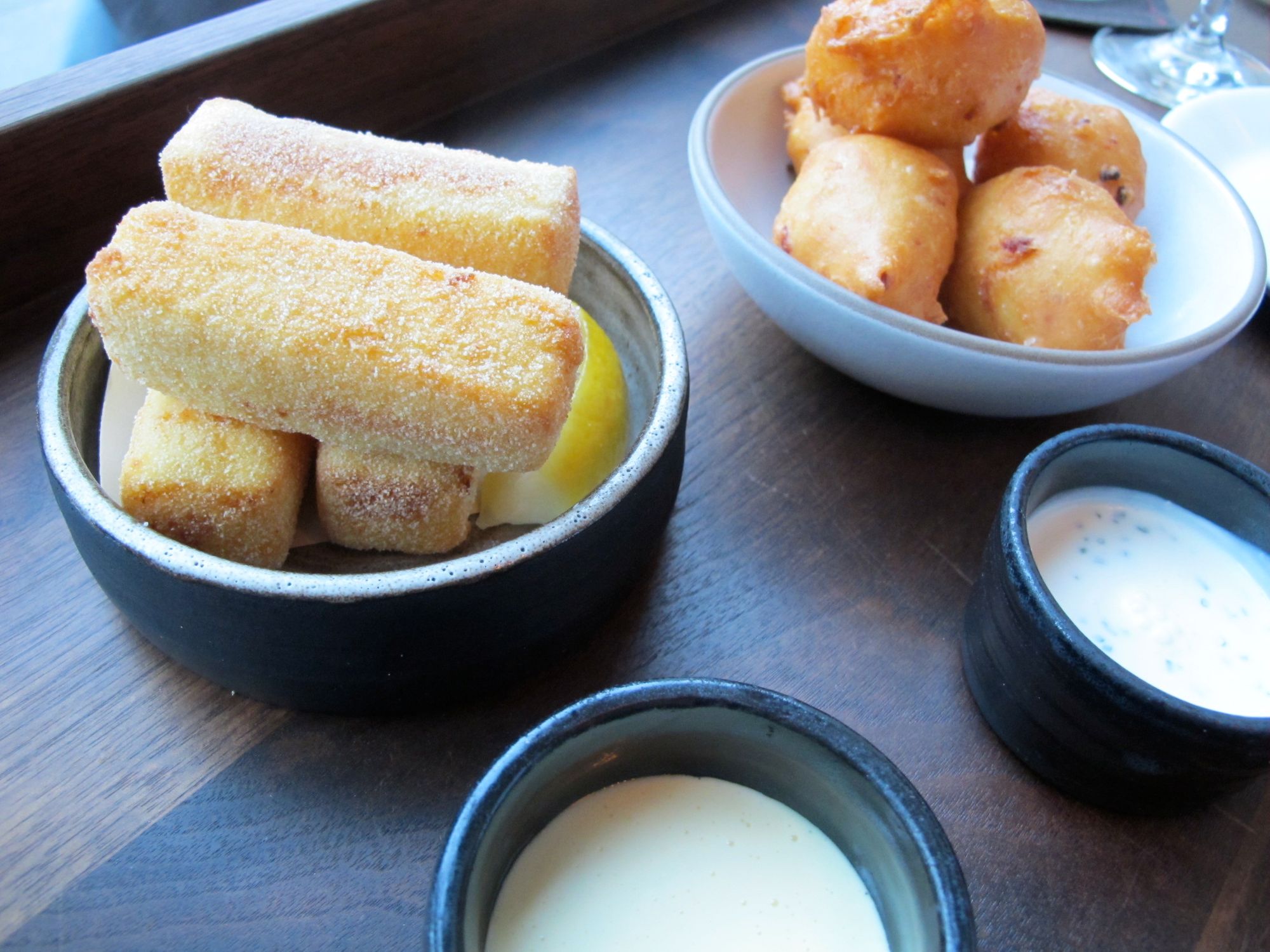
Panisse frites and bacon beignets.
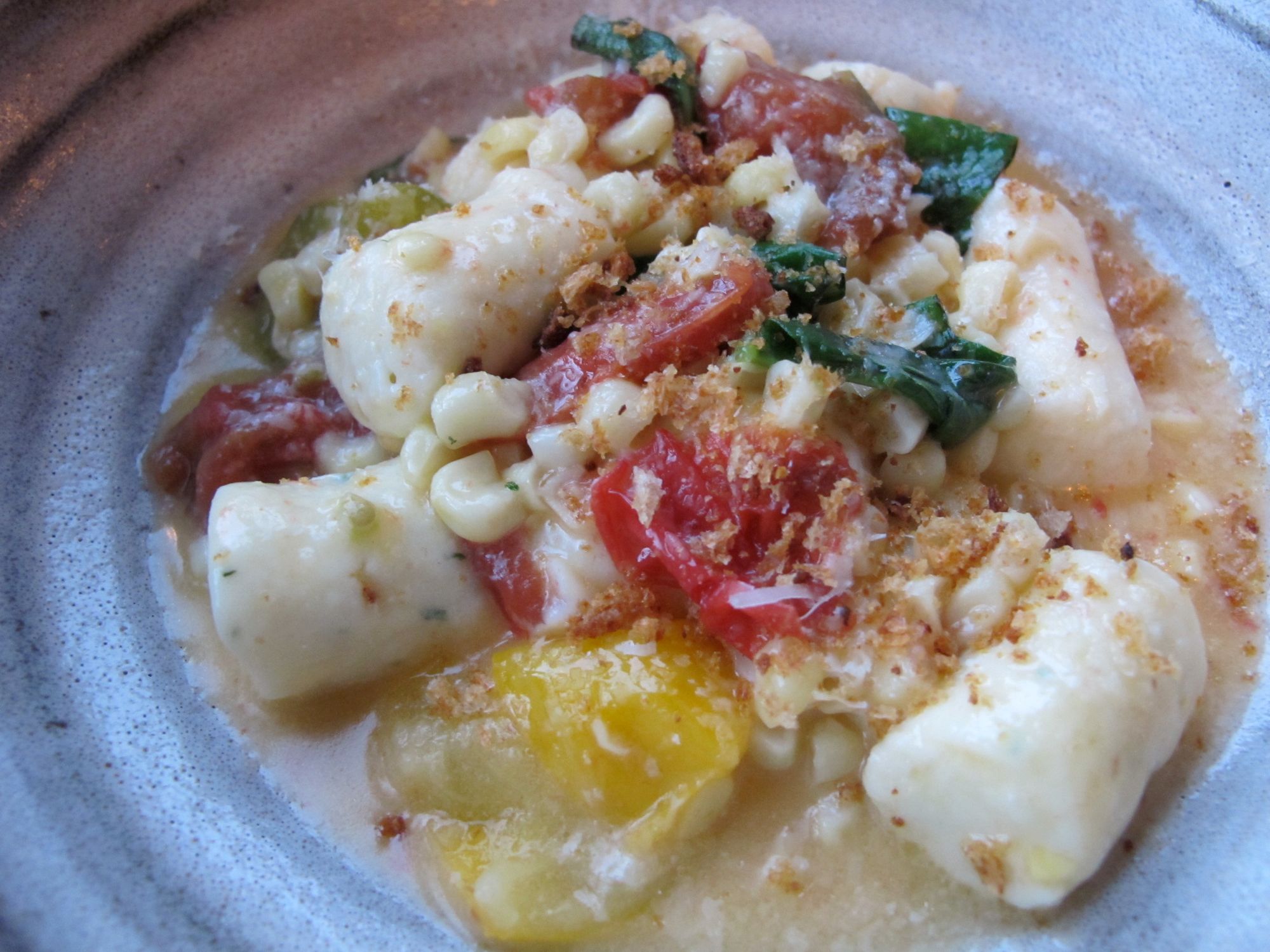
Ricotta gnocchi.
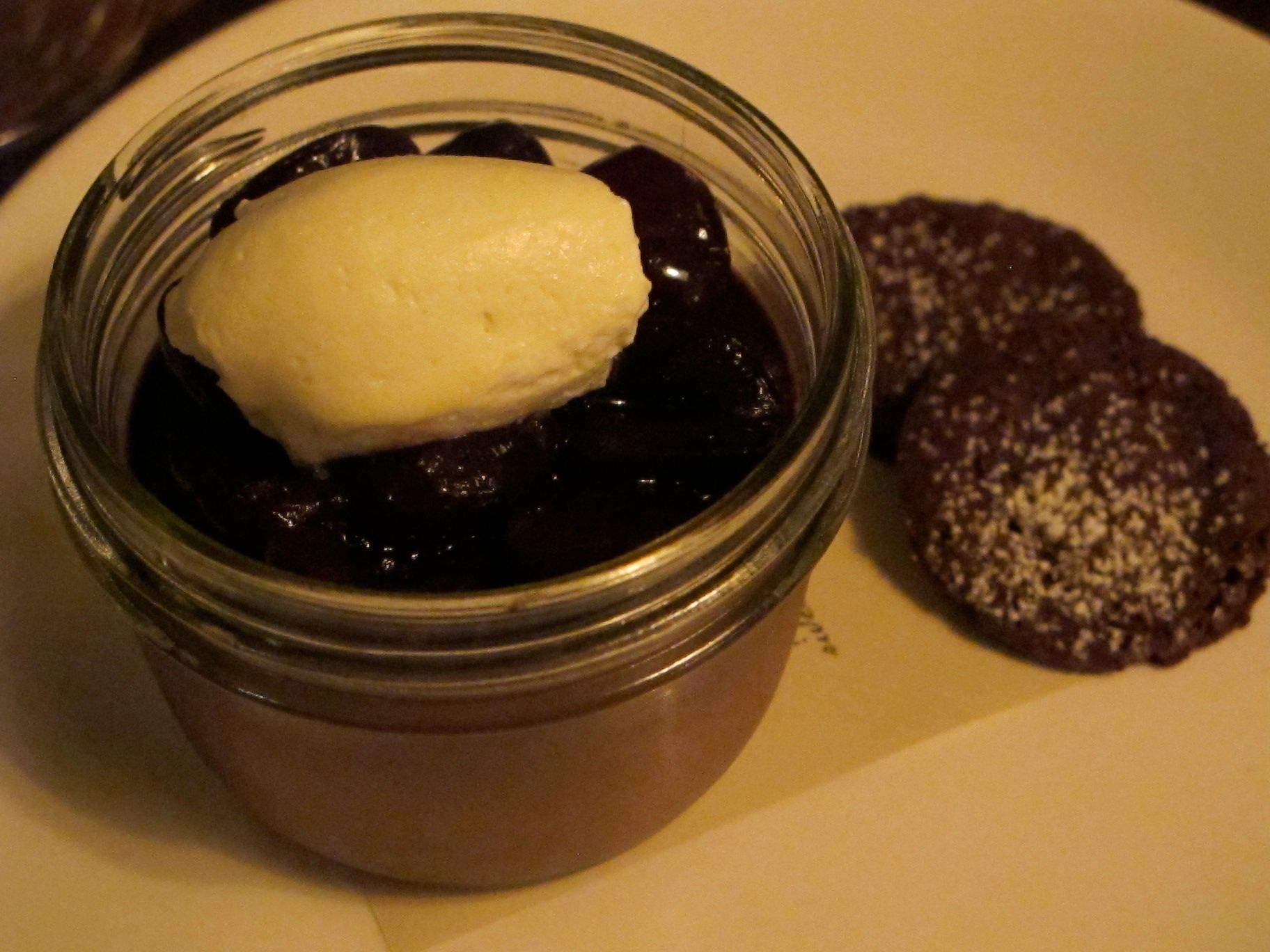
Bittersweet chocolate pot de crème.
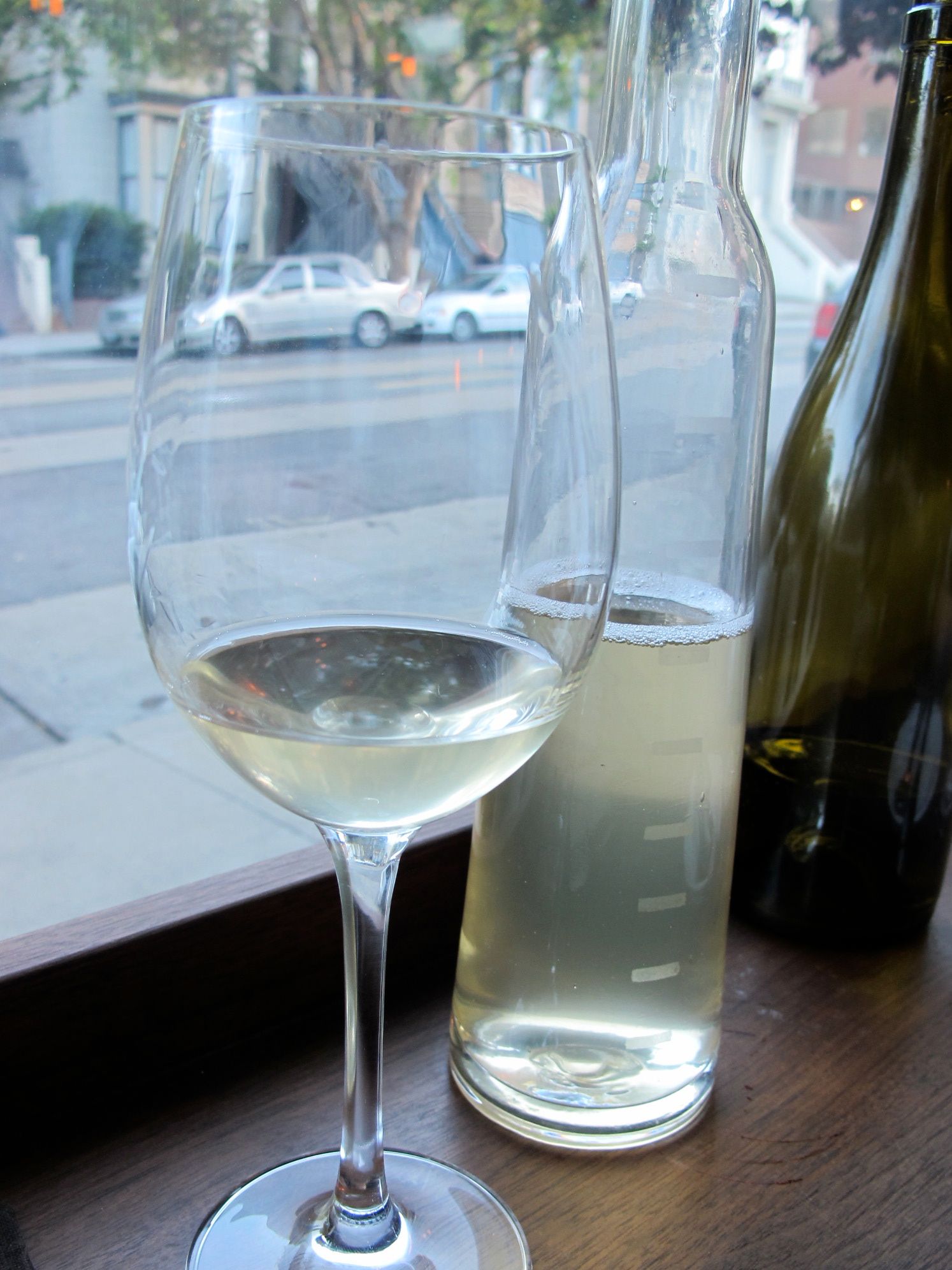
Wine by the ounce.
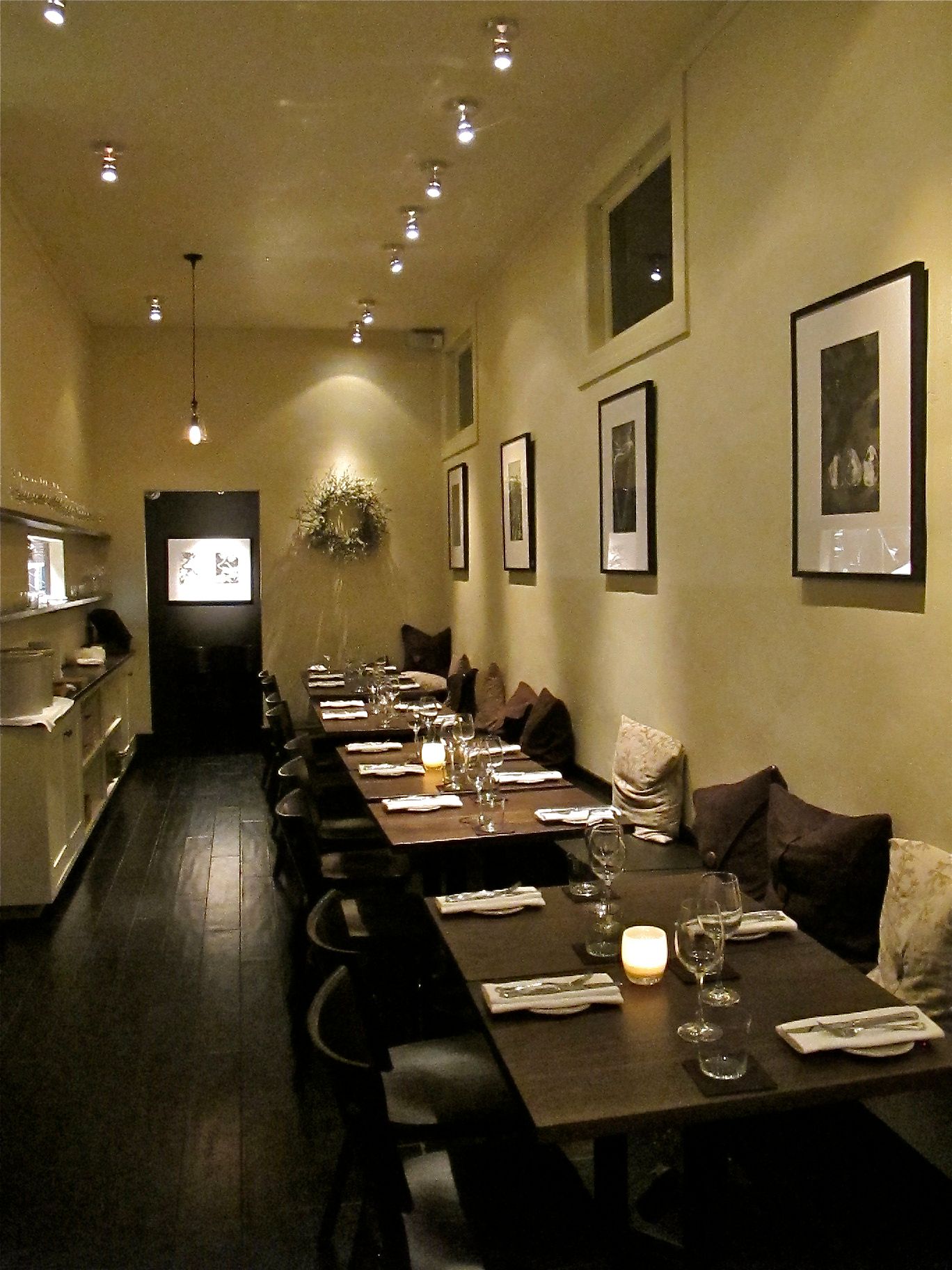
The dining room.
San Francisco adores its small restaurants—it’s like our tagline could be “The 49-seater—brought to you by San Francisco.” Here, you don’t need to be a big, splashy restaurant in order to get a lot of attention (from the media, and the dining public), and chef-owner Melissa Perello of FRANCES is proof. James Beard nomination for Best New Restaurant within months of opening, check. Heck, the restaurant just earned a Michelin star in its first year (then again, Perello is no stranger to stars—she also landed one while running the show at Fifth Floor).
The restaurant has been a white-hot ticket since it opened. People have waited for a reservation for weeks, months even. Until now, I even hesitated writing it up; I was like, “Why pop even MORE flashbulbs? Let the little neighborhood restaurant just be one, everybody!” But, Perello is a talented female chef, so I wanna write about her restaurant, goddammit.
And guess what? You can score a seat—and both times, I didn’t even have a reservation. The secret? There’s a bar/dining nook in the front, with about 10 barstools at a counter and the bar. Truth be told, I actually prefer sitting at the bar—with its pretty floral display and view into the tiny kitchen—but sadly they aren’t the most comfortable stools (I don’t think anyone sat in them for more than 20 minutes before buying them).
Both times I’ve walked in, once waiting about 10 minutes toward the end of the evening, and the other time, my friend and I just walked right in at 7pm, scoring primo seats looking out onto the street. (Yes, I know part of this is dumb luck.) What’s challenging is there’s nowhere to really hang out nearby while you wait for a table, so with the rainy season upon us, I wonder how many walk-in folks will want to gamble on a spot. (And really now, be strategic and don’t come in a party of three—I saw some ladies waiting out front for walk-in space at the counter for the entire duration of our meal.)
Okay, so, I do wish the bar was even bigger, because it’s the kind of place I’d love to be able to swing by for Perello’s marvy bouchées (collect all five!), and a glass of something something. Do not pass on the fat batons of panisse frites (all $6.50), so creamy and custardy inside—but they’re rich, so don’t fill up, yo. Grilled calamari is a study in balance and brightness—and perfect execution. The toasted Firebrand challah, topped with milky stracciatella cheese and a colorful herb salad, was almost too pretty to eat.
And you didn’t think I was going to skip mentioning the bacon beignets, did you? Oh hells no. They’re plump and hot, not even remotely heavy or oily—just dunk those bad boys into a little rustic ramekin of lightly sweet maple crème fraîche and chive. Oh yeah, and another piggy treat was the pork trotters with their lightly crisp edges—juicy and savory, nestled over a thick sauce gribiche while topped with herbs and pickled vegetables, especially transcendent with a glass of chenin blanc.
Full-size appetizers include ricotta gnocchi ($12), nestled into a sweet corn and tomato ragout—but the gnocchi were a touch large for my taste (they get too doughy when they’re that hefty, less silky). The corn and summer squash soup ($9) was so satisfying, but departed from the menu’s Cal-French-Med flavors with its notes of cumin and chipotle—consider it a mini day trip across the border.
Mains clock in around $26, like a guinea hen ($26) two ways, a roulade and confit, presented over polenta soaking generously in hen jus; or smoked steelhead trout ($26) perched on creamy fingerlings spiffed up in a mustardy sauce with dill. It’s also fitting there’s a bavette steak ($26) on the menu, juicy and a perfect steaky pink. There’s a vegetarian option, too—for a while, it was a dish of savory crêpe canelloni ($17), now a saffron risotto.
Dessert options are simple, like an almond crostata ($7), buttermilk panna cotta ($6.50), or the popular lumberjack cake ($6.50) with pear and dates, while the pot de crème ($7.50) with roasted bing cherries was dark and delish. I love each and every little cookie I’ve had here, from shortbread to chocolate sea salt.
It goes without saying, the seasonal ingredients are from some of our best purveyors. It’s the kind of food that hits the spot with just the right number of ingredients, which is such a balancing act: enough to be sophisticated and interesting, but not too many that they detract from the intrinsic flavors of the components. And Perello’s fine dining background shows in tuned technique and well-trained touches (plenty of quenelles—and they’re fans of crème fraîche here), to the texture of all the vegetables and proteins and sauces—excellent ingredients in excellent hands. Sometimes a sauce can be a bit acidic, or seasoning is off a touch, but it’s subtle stuff. And the plating—it’s always right, and looks so appetizing.
The food over-delivers for its approachable pricing, that’s for sure. But all the hype and the long waiting list can build expectations for more fireworks than this little spot intends to deliver—my advice is to just let it be really good. And popularity does have its price, because the kitchen can get weeded—on one visit, it took 40 minutes until our first course was served.
Plenty of interesting wines to geek out on (uh, sure, let’s serve an assyrtiko by the glass), and you can order a house red or white wine by the carafe (blended by Paul Einbund) for $1 per ounce. Madeiras, check. Another playful touch: the nightly market shot ($3), a little juiced and spiked shot of something seasonal—or a few “refreshers,” like a blackberry peach fizz made with Vergano Americano chinato ($7).
The room is very simple: dark wood floors, tables all lined up along the wall with wood chairs on one side and a banquette with pillows on the other. (Yeah, you’re going to hear your neighbors’ conversation.) I don’t know about the wreath on the wall—feels a bit suburban—but style crops up in the delicate glassware, the long aprons on the servers (who charmingly bring silverware to the table in wood boxes), and the bathroom is downright cute, with piped-in music and a milk can for used towels. I like the handmade and organic touch to everything, like the Heath teacups, heavy earthenware dishes, and hand-sewn coasters (and even Perello’s dad helped with the remodel). Service is polished and friendly—they really pay attention, even if you’re seated in the bar. I’d love to call this the perfect date two restaurant, but good luck getting that table.
Frances - 3870 17th St. San Francisco - 415-621-3870
the bookworm
Book Reviews (another place for your nose)
My Sweet Mexico: by Daisy Chow
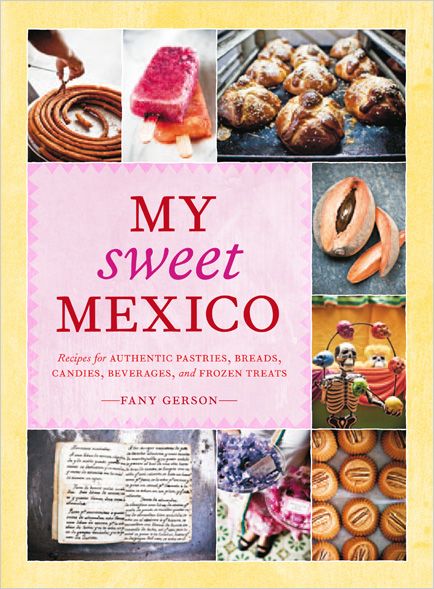
My Sweet Mexico: Recipes for Authentic Pastries, Breads, Candies, Beverages, and Frozen Treats Fany Gerson
In pastry chef Fany Gerson’s new cookbook My Sweet Mexico, I feel like I’ve traveled the entire country of Mexico several times over on a sweet culinary journey. It’s a journey that crosses both time and space—full of history, local people, and unique places—and throughout, it’s evident that Gerson has a deep and inspired love for the dulces of her homeland.
My Sweet Mexico encompasses a wide range of sweet recipes for authentic candies, pastries, breads, beverages, and frozen treats, gathered together in nine eclectic chapters with titles like Sweets from the Convents, Modern Mexico, and one devoted to corn. Inside each chapter, you’ll find recipes that have been passed down over generations: many were willingly shared, some were coaxed and cajoled out of their owners, and others remain such closely guarded secrets that the author had to make her own (close) renditions. Gerson traveled all over the country to research the book, visiting friends and family, old-fashioned bakeries, family-owned candy stores, even the private homes of artisans to learn about the disappearing art of their handmade sweets.
This book includes so many interesting and unfamiliar candies (made with ingredients like sweet potato, quince, amaranth, to name a few), I got the feeling that Gerson has a special fondness for candies. It also includes plenty of classic and/or well-known sweets such as tres leches cake, churros, and Mexican hot chocolate, plus modern desserts developed by Gerson, like her Mexican opera cake and passion fruit mezcal-trifle.
What I love most is each recipe is accompanied by a description of the food’s place in Mexican tradition and culture, a historical tidbit about its origins, or a personal vignette about growing up in Mexico City (and often a grateful thank-you from the author to the artisan who shared their time and recipe with her). Be sure to read each chapter essay for historical context, interesting background notes, and more stories. Plus the photos by Ed Anderson are colorful and gorgeous, yet have a haunting, unadulterated quality about them.
The old-fashioned flan (flan a la Antigua) recipe, true to the author’s description, is “not too eggy.” It’s a classic flan—smooth and rich—although one bit of advice: the recipe calls for you to make more caramel than needed to line the ramekins; don’t use it all, or the flan turns out too sweet. I also made the polvorones, or Mexican wedding cookies, a simple recipe that doesn’t call for eggs (so yes, you can eat the raw cookie dough). To make these cookies easier, I suggest buying almond flour (available at Rainbow Grocery) instead of making it, and scooping the dough rather than rolling it out and cutting circles. These cookies turned out delicious: they were moist but still had a crunchy, crumbly texture that turned into melt-in-your-mouth buttery goodness.
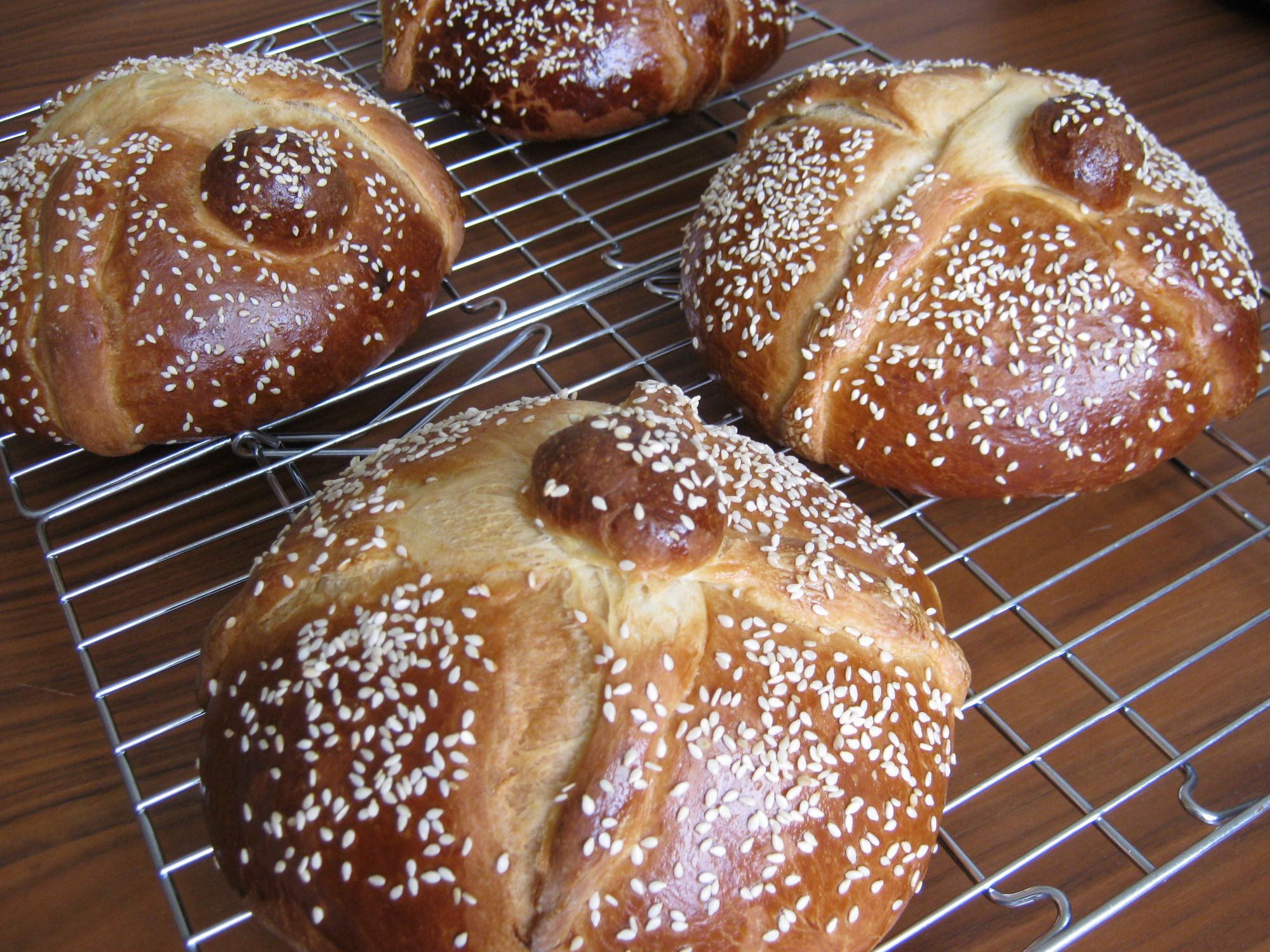
Last, I made the pan de muerto, or dead man’s bread, dividing the dough into four medium-sized rounds rather than two big ones so I could fit them on one baking sheet. The bread stole the show: the interior was light and airy yet soft and moist, and it had a deep brown crust; just imagine lightly orange-scented challah or brioche.
The only thing missing in this book are tips on how long the baked goods will last or instructions for longer storage (I like to freeze my desserts so I can have one anytime without having to fire up the oven). But if the recipes I tried are any indicator, maybe these sweets are so good, you end up eating it all and have nothing left to store.


